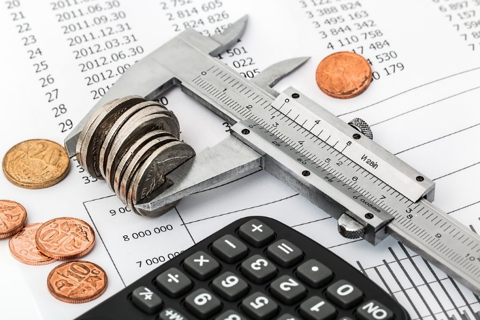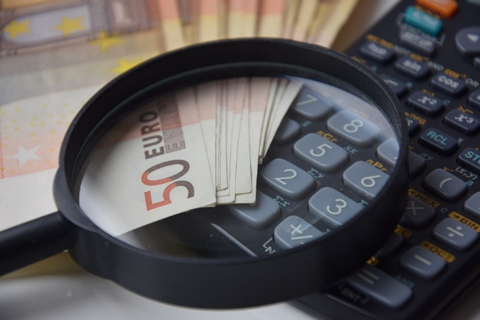Hidden Costs Behind Forex Trading
Online Forex trading became affordable for the retail trader because of brokerage houses. They enabled access to the most liquid market of them all: the interbank market.
Brokers partner with traders, as they share the same interest: market activity. The more active the trader is, the more the broker gains.
Hence, it is not only in the interest of the trader to make a profit but also in the broker’s interest. When both interests align on the same direction, trust leads to a long and stable relationship.
A brokerage house, though, is not a charity. It provides services and requires a fee.
Traders know that. After all, it would be like going to the cinema and expecting it to be free.
Everything that comes from the broker, regarding commissions and fees, are costs. The trader pays these costs directly from the trading account.
But Forex trading comes with other costs for the retail trader. Costs that, while not visible in the first place, affect the bottom line of a trading account.

Variable Spreads
A spread represents the difference between the bid and ask price. Or, the difference between the price one can sell, and the price one can buy.
When closing a trade, the closing price represents the opposite of the initial position. If the trade was on the long side (the trader bought), the trade will close from the bid price. If, on the other hand, was on the short side (the trader sold), the trade will close from the ask price.
The difference between the opening and the closing price represents the profit or the loss. On the long trade, if the price of a currency pair did rise, the trader marks the profit. On the short trade, if the market rose, the trader marks the loss.
If the trader makes a profit, the spread is a cost to deduct. If the trader makes a loss, the spread ads to the actual loss.
In all cases, the spread belongs to the broker. Brokers offer variable and fix spreads, meaning the spreads may or may not increase during the trading day.
A rule of thumb states that, the lower the spreads, the smaller the broker’s cut. The more extensive they are, the bigger the fee.
If the trader chooses to trade with a broker that offers fix spreads, they’ll be, on average, wider. While the trader pays for all trades a bigger fee, it protects the trading account from high volatility levels.
Variable spreads are both a blessing and a curse. On the one hand, the spreads get tight when there’s little or no volatility. But on the other side, especially when economic news comes out, they go wild.
Moreover, during rollovers, when liquidity gets thin, the spreads can be unbearable. Even on major pairs, like the USDCAD pair, at the end of the trading day, the bid and ask prices differ a lot.
That’s a big problem if traders use trailing stops on lower time frames. Or, if the stop loss is tight to protect profits. In fact, the real market doesn’t move so far, only the spreads of that broker couldn’t handle the liquidity.
Swaps in Forex Trading
Speaking of the daily rollover, another cost to consider is the swap. A swap is an overnight interest to keep positions open the next day.
The interest is positive or negative, representing an income or a cost for the trader. Because most of the currencies have a negative interest rate (Euro, the Swiss Franc, the Japanese Yen), and the rest have their rates close to zero, swaps tend to be negative.
Hence, most of the pairs have a negative swap or interest, that will disappear from the trading account at the opening of the next day. The trader must deduct this cost too when determining the profitability of a trade.
However, in the case of a positive swap, it’ll add to the trade’s profitability.
The phenomena resemble the central banks’ overnight deposit facility. Commercial banks may opt to park their reserves at the central bank.
For this, they’ll receive an interest. That happens when central banks want to drain liquidity from the markets. They want to tighten conditions.

Banking Fees
Before starting Forex trading, some fees bit either from the funds transferred or from the banking account. It depends on the method used to fund an account.
Typically, retail traders have little patience. Few retail traders look at cycles on bigger time frames and have the patience to wait when the price reaches specific levels. Most of them trade at market and don’t use stop loss orders.
The same behavior applies when funding a trading account. While using a credit card is more expensive, it is the preferred method because it takes the least amount of time.
Some brokers have huge fees on depositing with credit cards, fees that disappear from the amount transferred. Moreover, if the currencies differ, the exchange rate will favor the broker too.
When wiring the funds, it takes longer. The opportunity cost is the one that drives traders.
As such, they’ll always live under the impression they will miss something in the days until the funds arrive in the broker’s bank account. The reality tells different, but that’s human nature’s role in Forex trading.
FOMO (Fear of Missing Out) is a decisive factor too. Consider the last surge in the EURUSD rate.

In 2017, the trade to be on the Forex market was long on the EURUSD pair. It moved sharply higher from the 1.05 area to the 1.20. And, it took around six months.
For bullish traders, convinced the Euro will still appreciate against the dollar, the FOMO is enough to make them hurry and scrap any cost, just for fear of not missing the “big move.”
Inactivity Fees
Some brokers (not all of them!) charge an inactivity fee. That’s especially true with the big brokerage houses.
Remember that brokers want active traders, not any kind of traders. Therefore sometimes, just to stimulate trading activity, they offer volume-based incentives (e.g., earn a cash prize when turning a particular volume on the real market).
If there’s no trading activity in a certain amount of time, the broker charges an inactivity fee. In other words, either you trade, pay an inactivity fee, or close your trading account.

Conclusion
Before starting Forex trading, traders must put all the associated costs down on a piece of paper, or document.
Knowing these costs affect entire trading strategies. For example, if you have a scalping strategy (scalping = trading many times during the trading day for minimal profits) that targets ten pips for every trade, the spread matters. A simple one pip increase wipes out ten percent of potential benefits.
Also, costs tend to rise with the volume traded. For this reason, keeping everything proportional makes sense when growing a trading account.


